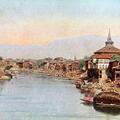The Mayo Hall, Allahabad
Now the Amitabh Bachan Sports Complex, this resolute example of Raj architecture was constructed in 1879. The architect was Richard Bayne, and the designs came from Professor Gamble at the precursor to what is now the Victoria and Albert Museum.










